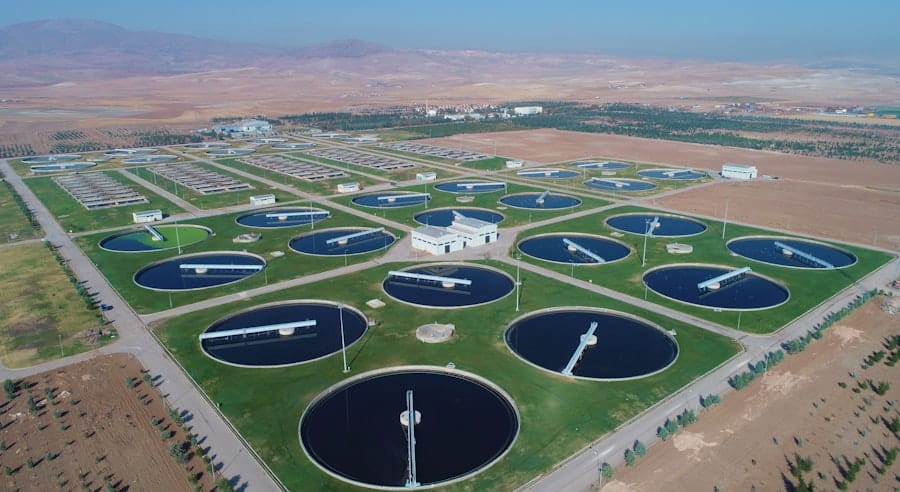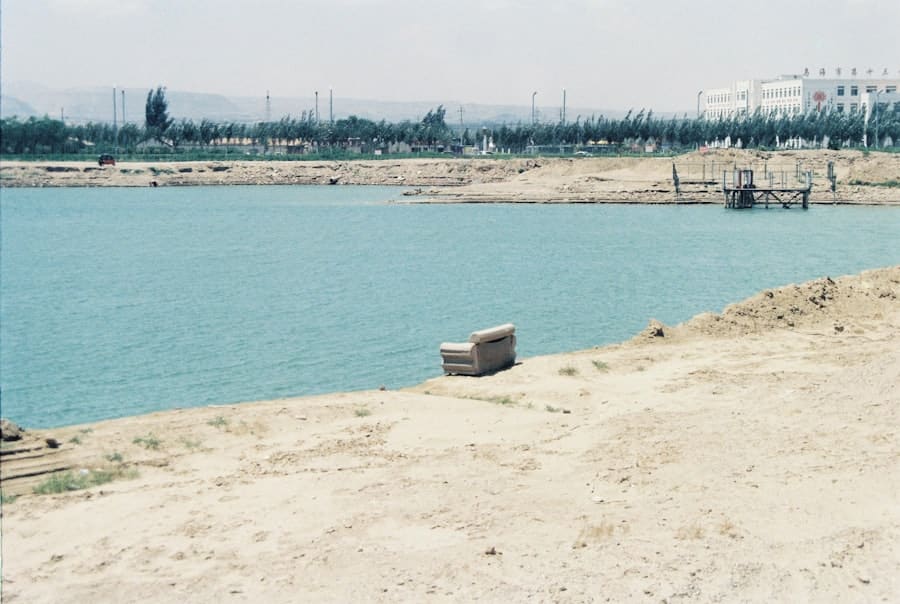Water desalination is a critical process that transforms saline water, primarily from oceans, into fresh water suitable for human consumption and agricultural use. As global populations continue to rise and freshwater resources become increasingly scarce, the importance of desalination has surged. This technology is particularly vital in arid regions where freshwater sources are limited, and the demand for clean water is ever-growing.
The process of desalination can be energy-intensive, often relying on fossil fuels, which raises concerns about environmental sustainability and greenhouse gas emissions. Therefore, integrating clean energy solutions into desalination processes is not only desirable but essential for creating a sustainable future. The intersection of water desalination and clean energy presents a unique opportunity to address two pressing global challenges: water scarcity and climate change.
By harnessing renewable energy sources such as solar, wind, and hydroelectric power, desalination can become more environmentally friendly and economically viable. This synergy not only reduces the carbon footprint associated with traditional desalination methods but also promotes the development of innovative technologies that can enhance efficiency and reduce costs. As nations grapple with the dual crises of water scarcity and climate change, the exploration of clean energy-powered desalination becomes increasingly relevant.
Key Takeaways
- Water desalination is the process of removing salt and other impurities from seawater to make it suitable for human consumption and agricultural use.
- Current challenges in water desalination include high energy consumption, environmental impact, and high operational costs.
- Advancements in clean energy technologies, such as solar and wind power, are being used to reduce the carbon footprint of water desalination processes.
- Renewable energy sources, such as solar and wind power, play a crucial role in powering water desalination plants and reducing their reliance on fossil fuels.
- Innovations in water desalination technologies, such as membrane distillation and reverse osmosis, are improving efficiency and reducing environmental impact.
Current Challenges in Water Desalination
Despite its potential, water desalination faces several significant challenges that hinder its widespread adoption.
These processes require substantial amounts of energy, which can lead to high operational costs and increased reliance on fossil fuels.
In regions where energy prices are volatile or where access to affordable energy is limited, the feasibility of desalination as a solution to water scarcity diminishes. Another challenge is the environmental impact of desalination plants. The intake of seawater can disrupt marine ecosystems, as it often involves the removal of small marine organisms along with the water.
Additionally, the discharge of concentrated brine back into the ocean can lead to increased salinity levels in local waters, adversely affecting marine life. Furthermore, the construction and operation of desalination facilities can have significant ecological footprints, raising concerns about habitat destruction and resource depletion. Addressing these challenges is crucial for ensuring that desalination can be a sustainable solution to global water shortages.
Advancements in Clean Energy Technologies for Water Desalination

Recent advancements in clean energy technologies have opened new avenues for improving the efficiency and sustainability of water desalination processes. Innovations in solar energy, for instance, have led to the development of solar-powered desalination systems that utilize photovoltaic panels to generate electricity for reverse osmosis or solar stills that harness sunlight directly to evaporate water. These systems can significantly reduce operational costs and carbon emissions compared to traditional methods.
Moreover, advancements in wind energy technology have also contributed to the desalination landscape. Wind turbines can provide a reliable source of renewable energy to power desalination plants, particularly in coastal areas where wind resources are abundant. The integration of wind energy into desalination processes not only enhances energy security but also stabilizes costs by reducing dependence on fossil fuels.
Additionally, research into hybrid systems that combine multiple renewable energy sources is gaining traction, offering even greater potential for efficiency and reliability in desalination operations.
The Role of Renewable Energy Sources in Water Desalination
Renewable energy sources play a pivotal role in transforming water desalination into a more sustainable practice. Solar energy stands out as one of the most promising options due to its abundance and decreasing costs. Concentrated solar power (CSP) systems can be employed to generate heat for thermal desalination processes, while photovoltaic systems can supply electricity for reverse osmosis plants.
Countries with high solar irradiance, such as those in the Middle East and North Africa, are particularly well-positioned to leverage this resource for large-scale desalination projects. Wind energy also offers significant potential for powering desalination facilities. Offshore wind farms, in particular, can provide a consistent and robust source of energy that aligns well with the energy demands of desalination processes.
By utilizing wind power, desalination plants can operate with reduced greenhouse gas emissions while benefiting from lower operational costs over time. Furthermore, integrating energy storage solutions with renewable sources ensures a continuous power supply, addressing one of the key challenges associated with intermittent renewable energy generation.
Innovations in Water Desalination Technologies
The field of water desalination is witnessing a wave of innovations aimed at enhancing efficiency and reducing costs. One notable advancement is the development of membrane technologies that improve the performance of reverse osmosis systems. New materials and designs are being explored to create membranes that allow for higher water flux rates while maintaining salt rejection capabilities.
These innovations not only increase the efficiency of existing systems but also reduce the overall energy consumption associated with desalination. Another promising area of research involves forward osmosis (FO) technology, which utilizes osmotic pressure differences to draw fresh water from saline sources without requiring high-pressure pumps. FO has the potential to significantly lower energy requirements compared to traditional reverse osmosis methods.
Additionally, researchers are exploring zero-liquid discharge (ZLD) systems that aim to minimize waste by recovering valuable minerals from brine while producing fresh water. These innovations represent a shift towards more sustainable practices in desalination, aligning with global efforts to conserve resources and protect the environment.
Environmental and Economic Benefits of Clean Energy-Powered Water Desalination

The integration of clean energy into water desalination processes offers numerous environmental and economic benefits. From an environmental perspective, utilizing renewable energy sources significantly reduces greenhouse gas emissions associated with traditional fossil fuel-powered desalination plants. This shift not only mitigates climate change impacts but also helps preserve marine ecosystems by minimizing the ecological footprint of desalination operations.
Economically, clean energy-powered desalination can lead to lower operational costs over time. As renewable energy technologies continue to advance and become more cost-effective, the reliance on fossil fuels diminishes, resulting in more stable pricing structures for water production. Additionally, countries investing in clean energy infrastructure for desalination can create jobs in both the renewable energy sector and water management industries, fostering economic growth while addressing critical resource needs.
Implementation and Future Outlook of Clean Energy-Powered Water Desalination
The implementation of clean energy-powered water desalination systems requires strategic planning and investment from both public and private sectors. Governments play a crucial role in creating policies that incentivize the adoption of renewable energy technologies in desalination projects. This includes providing financial support for research and development initiatives as well as establishing regulatory frameworks that promote sustainable practices.
Looking ahead, the future of clean energy-powered water desalination appears promising as technological advancements continue to emerge. The growing urgency surrounding global water scarcity will likely drive further investment in innovative solutions that combine renewable energy with efficient desalination methods. Collaborative efforts among governments, research institutions, and private companies will be essential in scaling up these technologies and ensuring their accessibility to regions most affected by water shortages.
The Path Forward for Sustainable Water Desalination
As we navigate the complexities of water scarcity and climate change, the path forward for sustainable water desalination lies in embracing clean energy solutions and innovative technologies. By prioritizing renewable energy sources and investing in research and development, we can transform desalination into a more efficient and environmentally friendly process. The collaboration between various stakeholders will be vital in overcoming existing challenges and unlocking the full potential of clean energy-powered desalination systems.
Through these efforts, we can ensure a sustainable future where access to clean water is no longer a privilege but a fundamental right for all.
In the quest for sustainable solutions to global water scarcity, the article “The Future of Water Desalination Powered by Clean Energy” explores innovative technologies that harness renewable energy sources to make desalination more efficient and environmentally friendly. A related topic that complements this discussion is the advancement of technology in various sectors, such as education. For instance, the article on The Best Tablets for Students in 2023 highlights how technological innovations are transforming educational tools, making them more accessible and effective for students. Both articles underscore the importance of leveraging technology to address critical challenges and improve quality of life.
FAQs
What is water desalination?
Water desalination is the process of removing salt and other impurities from seawater or brackish water to produce fresh water suitable for human consumption or irrigation.
What is clean energy?
Clean energy refers to energy sources that produce minimal or no harmful emissions, such as solar, wind, hydroelectric, and geothermal power.
How is water desalination currently powered?
Water desalination is currently powered by a variety of energy sources, including fossil fuels, such as natural gas and oil, as well as electricity from the grid.
What are the challenges with current water desalination methods?
Challenges with current water desalination methods include high energy consumption, environmental impact from greenhouse gas emissions, and reliance on non-renewable energy sources.
How can clean energy be used to power water desalination?
Clean energy can be used to power water desalination through the use of renewable energy sources, such as solar or wind power, to provide the electricity needed for the desalination process.
What are the benefits of using clean energy for water desalination?
Using clean energy for water desalination can reduce greenhouse gas emissions, decrease reliance on non-renewable energy sources, and contribute to sustainable water management.
What are some emerging technologies for clean energy-powered water desalination?
Emerging technologies for clean energy-powered water desalination include solar desalination, membrane distillation, and reverse osmosis systems powered by renewable energy sources.
What is the future outlook for water desalination powered by clean energy?
The future outlook for water desalination powered by clean energy is promising, with ongoing research and development focused on improving energy efficiency, reducing costs, and increasing the scalability of clean energy-powered desalination technologies.

